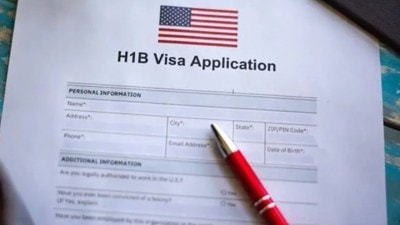The New Art Route
The Kochi-Muziris Biennale is destination 2.0 for international and Indian artists
The Kochi-Muziris Biennale is destination 2.0 for international and Indian artists
The quaint coastal town has hosted innumerable travellers in the past from tourists,attracted to its picturesque seascape,to traders,scouting for spices. But in December 2012,there will be a new entrant to this pack. Kochi will dress for artists and art connoisseurs. Its streets will be dotted with works of art and historical buildings will get a fresh coat of paint. 12.12.12 is the date when the three-month-long Kochi-Muziris Biennale will make its debut. On display will be over 80 works of art,placed across the cosmopolitan port town from the century-old Durbar Hall to the 17th-century Bastion Bungalow boasting Indo-European architecture. The 150-year-old Aspinwall House on the waterfront will accommodate multiple exhibits and Pepper House,a spice trading godown,will also feature on the biennale map. The surroundings will be part of the artwork and also borrow from it. Artists have been invited to respond to the place,the time and the people, says Riyas Komu,co-founder and co-curator of the biennale,along with Bose Krishnamachari.
It has been a long journey one that started in May 2010,when the proposal was first mooted to the then state minister of culture,MA Baby. Funds were collected,sites shortlisted. Even as the organisers defended corruption allegations against them,the Queen of the Arabian Sea was preparing for D-day.
Now,the blueprint of the biennale is out and a comprehensive dossier on the cultural make-up and historical facts on the city is ready. The last few months have seen numerous volunteers acquaint artists with the streets of Kochi to find a theme for their works. If in July,Argentina-born visual artist Ariel Hassan and leading Australian contemporary artist Hossein Valamanesh flew to Kochi,earlier this month,Afghan artist Amanullah Mojadidi was at the western coast. Also doing rounds of the town were Subodh Gupta,Sudarshan Shetty,Vivan Sundaram,Ranbir Kaleka,Jyothi Basu,Anita Dube,Shaina Anand,Reji KP,Sanchayan Ghosh and performing artist M.I.A. Over the last six months,we have been evaluating the artists proposals and working out what is feasible to produce or transport and how their works fit into the non-traditional and public spaces available, says Komu.
Back in their studios,artists are putting together their thoughts and scanning memories of Kochi to translate them into art. It is a great place. The weather is good,food is fantastic and venues for the exhibitions are incredible, says Hassan,who shuttles between Australia and Germany. In July,he spent over a week in the city,photographing protagonists for the Hypothetical Future Value (HFV) project that will be exhibited at the biennale. What interested me was that Kochi was colonised by several ethnic and religious groups who found a way to cohabit while maintaining elements of their original cultural identities. This notion of a cultural mix,the intellectual richness that is accessible through it,and hybridisation that can be attained from such complex environments,will present a new archetype, adds Hassan,who will recompose the photographic portraits into abstract paintings. He will be back in Kochi in November to install the work.
Amsterdam-based,Iraq-born artist Joseph Semah,meanwhile,has just arrived in Kochi. He hopes to make a stop at the Paradesi Synagogue,the oldest active synagogue in the Commonwealth. This is his first visit to India. Im not too familiar with the art scene in this region, he confesses,adding that the biennale will provide an opportunity to learn about it.
Delhi-based artist Rohini Devasher agrees. She too is looking forward to the event as a platform for interaction. It will bring together Indian and international artists, says Devasher. Earlier this month,she spent two days in Kochi,with artist T Venkanna,searching for a location for her artwork and an appropriate subject. There is a lot of buzz and people seem to be excited,which will help make the biennale a success, says Venkanna,who hopes to install his work in Aspinwall House. It will be a drawing installation displayed in a 20ftx20ft room, he shares. In the neighbourhood,Santiniketan-based Sanchayan Ghosh will install his site-specific work that draws from the histories and oral traditions of the varied communities in Kochi.
The lack of any other art event of this magnitude in the region raises expectations. I met several people at Art Basel and Venice Biennale last year who said that theyd meet me in Kochi,as if it was a given. In the last few years,Indian art and artists have gone global and now international artists and art experts are coming to India. The fact that it has been organised by two practising artists makes it more awaited, says contemporary artist Sudarshan Shetty who is a familiar face at prestigious art events. Planning to showcase a site-specific installation that depicts the cosmopolitan nature of the city as a melting pot of cultures,the biennale,he adds,will provide an opportunity for younger artists who might not have travelled to international exhibitions to see the works of international artists. Artists the world over are engaging with a variety of issues and this is where they will come together, he says.
Aimed at engaging local talent in art,some of the projects will seek direct participation from art enthusiasts. A parallel programme,KMB Open 2012,has invited proposals from people who want to conduct cultural events,exhibitions and shows during the biennale alongside the curated ones. Hassan has conceived a website where youngsters will be encouraged to offer inputs on what they believe their future value will be. The internet is a good way to expand the reach of the biennale. The website will offer a chance to contrast the views of local people with other youngsters from the world over, says Hassan.
While this website will blur the boundaries,both political and personal,so will some of the artwork on display. Amanullah Mojadidi,one of the leading artists in Afghanistan,is hoping to establish links between India and Afghanistan through his mixed-media installation at the biennale. It will look at historical,religious,political,and especially my own personal ties with India and Afghanistan, says the US-born,Kabul-based artist who is known for works with political connotations.
He believes that art in the subcontinent will also get a boost from the biennale. Artists from the region (including Afghanistan,India,Pakistan) have been pulled towards events,exhibitions,biennales and other activities in what has come to be lumped together as the MENASA (Middle East-North Africa-South Asia). The biennale will be a catalyst for helping art from the region stand out and stand up on its own,rather than be dependent on an art movement where the nucleus lies somewhere else, he notes.
The impact of the biennale might be difficult to predict but it probably will be a huge leap for the nation that made its official debut at the much-acclaimed Venice Biennale only last year. Will the canal town of India match up to its counterpart in the West and emerge as a destination on the global art map? The answer will be clearer in another four months from now. As Komu sums it up: There is curiosity,there is anticipation. No one knows exactly what the first Kochi-Muziris Biennale will look like not even us.



- 01
- 02
- 03
- 04
- 05




























